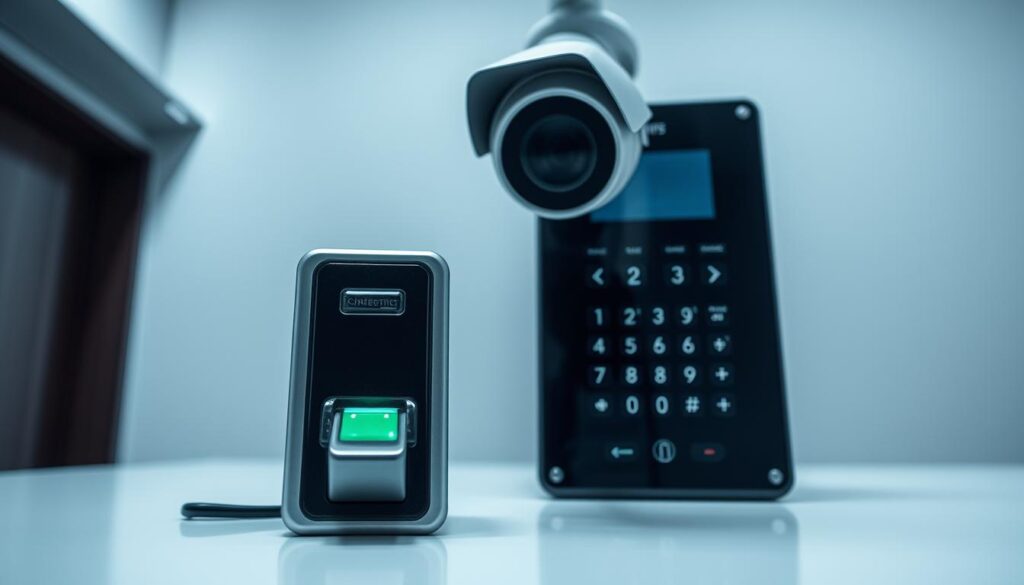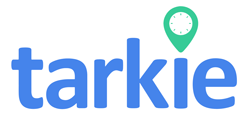In today’s world, data breaches are becoming more common. Have you thought about how an attendance system can affect your company’s security and privacy? It’s not just for keeping records; it’s vital for businesses in the Philippines to follow labor laws and keep payroll accurate.
Choosing a system that values both privacy and security is crucial. Small and Medium Enterprises handle sensitive employee data. They need strong security and privacy settings to avoid data breaches and stay compliant. Using a secure attendance system can also improve trust and morale, leading to better retention rates.
Key Takeaways
- Choosing the right attendance system is essential for security and compliance.
- Employee privacy must be prioritized alongside operational efficiency.
- Robust security features can prevent data breaches and enhance employee trust.
- Integrating attendance systems with HR software streamlines processes and reduces errors.
- Understanding regulatory requirements is crucial in selecting a secure attendance system.
Understanding the Importance of an Attendance System
In today’s fast-paced world, a good attendance system is key for businesses to thrive. It helps reduce the workload on HR teams, letting them focus on important tasks. This is crucial for companies in the Philippines, as they switch to better time-tracking methods to improve payroll accuracy.
Without a good attendance system, businesses face problems like time theft and wrong pay. For instance, using biometric authentication can cut down on unauthorized clock-ins and outs. This makes the workplace more honest and helps employees stay on track.
Looking at attendance data shows important trends. Detailed reports help leaders make better decisions by spotting patterns of missing work. This lets companies act fast to lower absenteeism. It also makes following labor laws easier, avoiding fines or legal trouble.
Also, linking attendance tracking with payroll makes sure salaries are fair. This boosts employee morale and helps in planning work better. A good attendance system makes operations smoother and keeps the team motivated.
Key Features to Look For in an Attendance System
When picking an attendance system, look for key features. These include clocking in/out, leave management, payroll integration, and reporting. These features make daily tasks easier and help manage better.
An effective system should have automated scheduling tools. For example, systems that send alerts for missed clock-ins help employees stay on track. This way, employees know right away if they’re missing a clock-in.
Workforce analytics is also important. It gives insights into who’s absent often or working too much overtime. This helps create a fair work environment.
A good user experience is key. A hard-to-use system might scare people off. Systems that let employees manage their own time and leave reduce HR’s workload. Cloud-based systems are great for field workers because they can access them from anywhere.
The table below shows important features to look for in an attendance system:
| Feature | Description | Benefits |
|---|---|---|
| Clocking In/Out | Records the start and end times of employee shifts | Improves payroll accuracy and accountability |
| Leave Management | Facilitates employee time-off requests and approvals | Streamlines HR operations, enhancing employee satisfaction |
| Automated Scheduling | Generates and shares schedules with minimal manual input | Reduces scheduling conflicts by up to 50% |
| Workforce Analytics | Provides insights into attendance patterns and productivity | Enhances decision-making and accountability |
| User Experience | Interface that is user-friendly and easy to navigate | Encourages adoption and minimizes training needs |

Privacy Considerations in Attendance Tracking
As more companies use attendance systems, keeping employee data safe is key. It’s important to balance work needs with protecting personal info. This builds trust with employees.
Data Security Standards
Strong data security is vital for any attendance system. Companies face big risks from data breaches. They must use encryption to keep info safe from hackers.
Data breaches can cost a lot. Using secure cloud hosting helps keep employee data safe. Regular security checks help find and fix weak spots.
Access Control and User Permissions
Good access control is essential for a secure system. Clear user permissions help limit who can see or change attendance records. This reduces the risk of unauthorized access.
Teaching employees about their data helps build trust. It shows the company values their privacy. This makes employees feel more secure.
![]()
Security Features Essential for a Secure Attendance System
Choosing the right attendance system is key for any organization. It must protect employee data and improve work efficiency. Advanced security features prevent unauthorized access and data breaches.
Data Encryption Techniques
Businesses need attendance systems with strong data encryption. This keeps employee info safe, like clock-in/out times and personal data. Using AES-256 encryption is a good start.
Biometric authentication, like fingerprints and facial scans, boosts security. It also cuts down on time fraud by half. But, getting consent for biometric data is crucial.
Role-based access control (RBAC) limits who sees biometric data. Regular security checks are also important. They help keep data safe and avoid big fines.

Systems with self-service features save HR a lot of time. Employees can manage their own records securely. This makes privacy better and work management more efficient.
Cloud-based attendance solutions are becoming popular. They cut IT costs and make attendance tracking more accurate. Good security and encryption are vital for a reliable attendance system.
For more on choosing the right security features, check out this selection guide.
Types of Attendance Systems: Pros and Cons
Choosing the right attendance system is key for any business. There are many types, each with its own benefits and drawbacks. Knowing these can help companies pick the best fit for their needs and team.
Biometric Attendance Systems
Biometric systems use unique traits like fingerprints or facial scans to identify workers. They are very accurate, cutting down on problems like buddy punching. This accuracy saves time and keeps businesses safe from legal trouble due to wrong records.
- Pros:
- High accuracy and accountability
- Prevents time theft and unauthorized clock-ins
- Offers detailed attendance reports
- Cons:
- High initial setup costs for specialized hardware
- Error rates can affect reliability
- Potential privacy concerns regarding data collection
GPS Tracking Attendance Solutions
GPS tracking is great for keeping tabs on remote workers. It lets businesses track where employees are in real-time. This is super helpful for teams that work from different places or on the move.
- Pros:
- Flexibility for remote workforce
- Real-time tracking of employee locations
- Promotes accountability during work hours
- Cons:
- Possible privacy concerns regarding constant location tracking
- Dependence on GPS accuracy
- Technical glitches can disrupt attendance recording
![]()
Evaluating User Experience and Accessibility
A user-friendly attendance system is key for high employee adoption. It should be easy to use, letting employees clock in and out, request leave, and see their schedules without trouble. This makes the system easy to use and encourages regular use.
Mobile accessibility is also vital in today’s attendance solutions. Employees can manage their attendance from anywhere, which is great for those in fieldwork or remote jobs. A cloud-based system makes it even better, allowing real-time tracking and updates on different devices. This keeps everyone informed and connected, no matter where they are.
Features like Employee Self-Service (ESS) make it easy for employees to access their info. This helps HR staff focus on important tasks, not just paperwork. Employees can see their attendance records right away, helping them plan their schedules better.
Also, a good cloud-based system offers advanced reporting. These reports show attendance patterns, helping with staffing and following labor laws. Companies can also use automated alerts for overtime, saving money and improving task management.
Designing with the user in mind and testing thoroughly can catch problems early. This saves time and money in the long run. Companies that focus on user experience and mobile access improve both employee happiness and work efficiency.
| Feature | User Experience Benefit | Accessibility Impact |
|---|---|---|
| Intuitive Interface | Simplifies navigation and promotes regular use | Users can efficiently manage attendance processes |
| Mobile Accessibility | Allows management from remote locations | Supports field and remote workers effectively |
| Employee Self-Service | Reduces administrative burden on HR | Empowers employees to manage their schedules |
| Automated Alerts | Helps avoid overtime expenses | Enhances manager response times |
| Advanced Reporting | Reveals attendance patterns | Aids compliance with labor laws |
Compliance with Labor Laws and Regulations
Keeping up with labor laws is key for businesses in the Philippines. They must deal with many rules, like work hours, paid leave, and fair workweek laws. A good attendance system helps manage these rules well and avoids trouble.
Automated reporting makes tracking easier and keeps records ready for audits. This way, companies can avoid fines and lawsuits over wrong payrolls. A reliable attendance system keeps records accurate, protecting against common problems.
Automated tracking boosts accountability by showing real-time data on absences and late arrivals. As laws change, these systems help keep up without needing constant manual checks.
Training through these systems teaches employees about compliance, building a responsible culture. Clear attendance rules make work more open and trustworthy. This leads to happier and more productive employees.
Integrating Attendance Systems with Existing HR Software
In today’s fast-paced work environment, HR software integration is key. It helps streamline operations and achieve seamless workflows. By linking attendance systems with HR software, companies can cut down on HR’s workload.
This integration boosts data accuracy and operational efficiency. It leads to better overall performance.
Effective payroll integration between attendance systems and HR software is crucial. It ensures work hours are accurately recorded and reflected in payroll. This automation reduces manual data entry errors, providing reliable payroll information.
Integrating onboarding software with attendance systems makes onboarding smoother for new hires. It manages tasks without constant HR involvement.
Organizations should look into integrating HR processes, focusing on key areas like onboarding and performance management. Enhanced analytics from these integrations offer a detailed view of data. This supports informed decision-making and boosts employee engagement.
Implementing such systems improves communication between departments. This leads to a more productive workplace. For more insights, check out this comprehensive guide on employee tracking.
